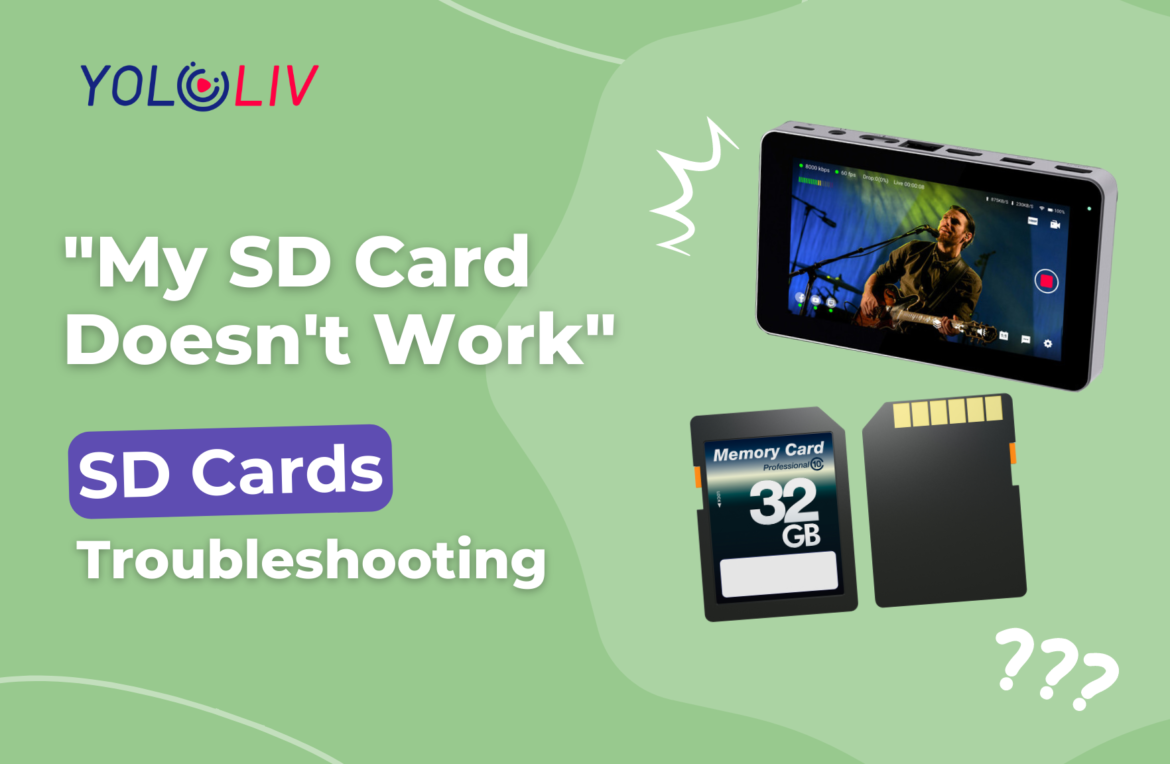Today we’re going to delve into one of the remarkable features of the YoloBox In-Stream: its ability to handle internal and external storage for media playback and recording. The YoloBox has gained popularity among our customers, and the internal video playback capability is often regarded as one of their favorite features. Whether you need to display logos, titles, animations, GIFs, videos, or even PDFs, the YoloBox offers easy access to these media files through the internal SD card or the built-in USB port.
Smooth Sailing with SD Card Usage
At times, you may encounter issues where the YoloBox fails to recognize the SD card or does not recognize any images or videos after inserting the card. Fear not! There are a few steps you can take to ensure a smooth experience when using the SD card.
Identifying Your YoloBox Version
First and foremost, it is essential to determine which YoloBox version you are using. There are two primary versions: the original YoloBox and the YoloBox In-Stream. To differentiate between the two, note that the original YoloBox, released in 2017, features two HDMI ports along the top edge. In contrast, the YoloBox In-Stream has the same HDMI ports but also includes quarter 20 threaded mounts on both sides and vents along the raised back panel to dissipate internal heat.
SD Card Compatibility for the Original YoloBox
For the original YoloBox, it is crucial to use an SD card with a capacity of less than 128GB and formatted in the FAT32 format. If your computer or video camera has reformatted the card as exFAT or any other format, the original YoloBox may not recognize it. In such cases, check and reformat the SD card using a computer to resolve any potential issues.
Checking SD Card Format on Mac
To check the format of your SD card on a Mac, follow these steps:
- Insert the SD card into an SD card slot or media reader.
- Right-click the media and select “Get Info.”
- A window will display the format of your SD card.
Reformatting SD Card on Mac
If your SD card is not formatted as FAT32, you need to reformat it. Here’s how:
- Click the search icon or press Command + Space and type “Disk Utility” to open it.
- In the left sidebar, select the SD card.
- Click the “Erase” icon at the top of Disk Utility.
- Make sure to select “FAT” in the format pull-down menu.
- Click the “Erase” button to initiate the formatting process.
Checking SD Card Format on Windows
To check the format of your SD card on Windows, adhere to the following steps:
- Insert the SD card into an SD card slot or media reader.
- Right-click on the disk and select “Properties.”
- The properties window will display the file system format of your SD card.
Reformatting SD Card on Windows
If your SD card is not formatted as FAT32, you can reformat it using these instructions:
- Right-click on your SD card and select “Format.”
- In the format pop-up window, ensure that the file system is set to FAT32.
- Click the “Start” button to initiate the formatting process.
Media Format Compatibility
When facing difficulties with video or image recognition on your YoloBox, ensure that your files are in the correct formats. Here are the supported formats for various media types:
Image Formats:
- JPEG
- PNG (including transparency)
- GIF (including animated GIFs)
Video Formats:
- MP4
- MKV
- MOV (without transparent background)
- MPG
- VOB
However, please note that the following formats are not supported:
- AVI
- WMV (Windows Movie)
Upgraded Storage Options with YoloBox Pro
If you have the YoloBox Pro, you can take advantage of its enhanced storage capabilities. The YoloBox Pro features an upgraded SD card reader that supports SD cards formatted with FAT32, exFAT, and NTFS. You can use SD cards with capacities of up to one terabyte (TB) on the YoloBox Pro. This means that SD cards with capacities of 256GB and 512GB will work seamlessly on the Pro model, unlike the original YoloBox, which is limited to 128GB cards.
Furthermore, the YoloBox Pro supports the same image and video formats as the original YoloBox:
Image Formats:
- JPEG
- PNG
- GIF
Video Formats:
- MP4
- MKV
- MOV (without transparent background)
- MPG
- VOB
Remember, the Pro model also does not support AVI or WMV (Windows Movie) formats.
USB Storage as an Alternative
In addition to the SD card, both the YoloBox and In-Stream allow you to use a USB stick for media playback and recording purposes. If you encounter issues with the SD card, but it is readable on another device, you can transfer your media files to a USB stick and plug it into the USB port of your YoloBox. This enables you to access your media without any hassle.
Keeping Your YoloBox Up to Date
To ensure optimal performance and compatibility, it is crucial to keep your YoloBox or In-Stream device up to date. Check for updates regularly by following these steps:
- Go to the account screen on your YoloBox or In-Stream device.
- If there is a new update available, an upgrade notification window will pop up.
- Follow the on-screen prompts to initiate the update process.
30,652 total views, 15 views today

Aura, the marketing specialist at YoloLiv. With her extensive work experience and motivated work attitude, she continually encourages user issue solutions and feature request fulfillment in order to satisfy the demands of more people.


